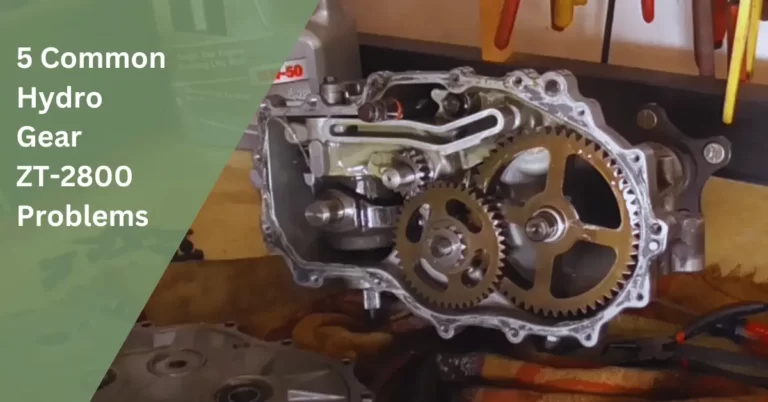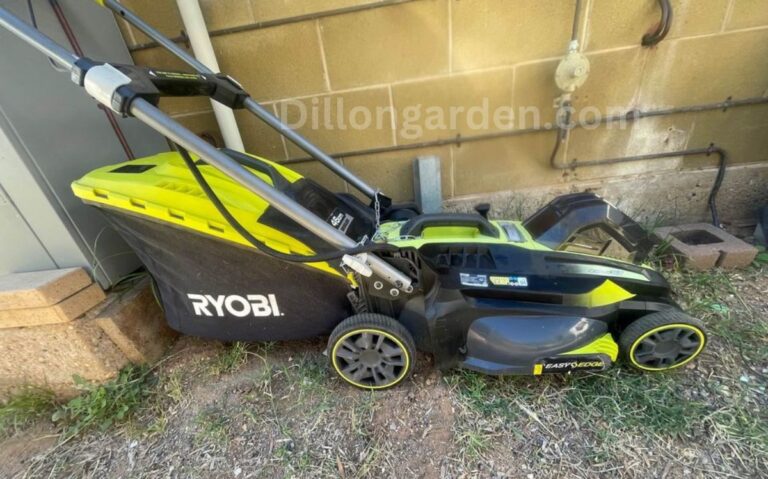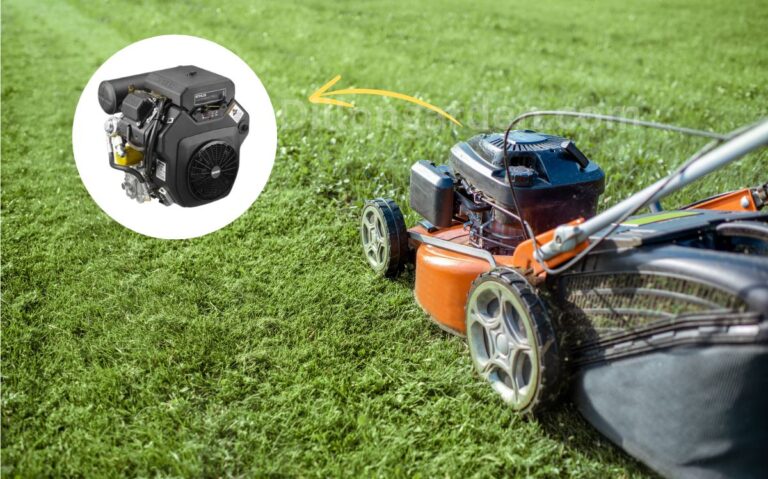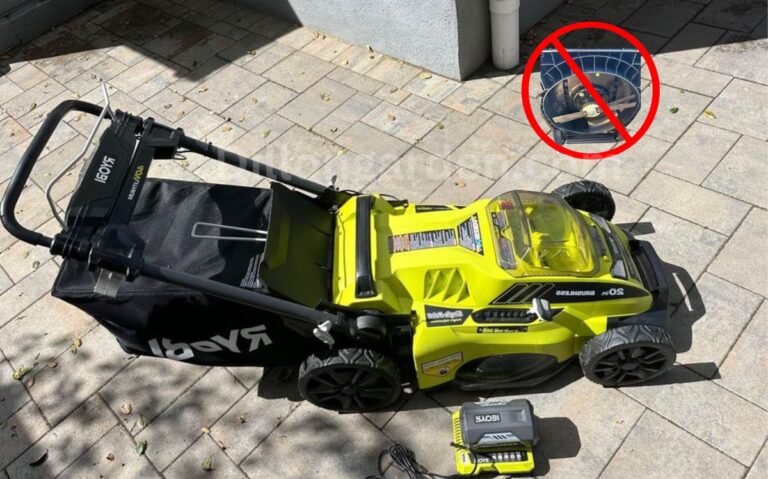Why Lawn Mower Runs for 5 Minutes then Dies [Solved!]
Imagine you get into cleaning your messy lawn, but unfortunately, your mower starts dying after a few minutes of use. It not only kills your time but also can affect other compartments of the mower. And to fix it, you need to understand the core causes of the issue first.
If your lawn mower runs for 5 minutes then dies, it indicates that a lot of units of the mower are malfunctioning, These include:
- Malfunctioning carburetor
- Faulty caps
- Overheated mower
- Worn out or damaged air filter
- Defective spark plugs
No matter what causes the stalling, you should immediately look into the solution. Or else the mower can stall beyond repair. So sight tight, and let’s go through the instant fixes!
How Does a Lawn Mower Function?

There might be different types of lawnmowers, yet their basic functions are similar. They mainly run the blade by producing combustion or power derived from the fuel tank.
The fuel tank alone cannot deliver power if other internal and external units do not work in combination. In simple terms, the carburetor, air filter, spark plugs, caps, and other compartments help the machine receive and release air pressure.
Such regulation or flow of pressure is necessary for the fuel system and engine to run the blades that cut the grass continuously. If any of them glitches, chances are the machine will lag or stall.
Read also: Troubleshooting Mower/Tractor Engine Dies When PTO Is Engaged
Why Does My Lawn Mower Runs For 5 Minutes Then Dies?
If the mower functions for 5 minutes and then dies, it’s a sign that the mower is stalling due to internal or external compartment issues. Let’s take a look at these faulty compartments that cause the issue to understand which solution works best –
1. Malfunctioning Carburettor
Carburetor is the soul of a lawn mower, as it mixes air and fuel. Thus, the mower can run without lagging.
So if it malfunctions, the mower cannot combine proper oxygen and air to supply to the engine. As a result, the mower stalls or runs briefly, and then stops!
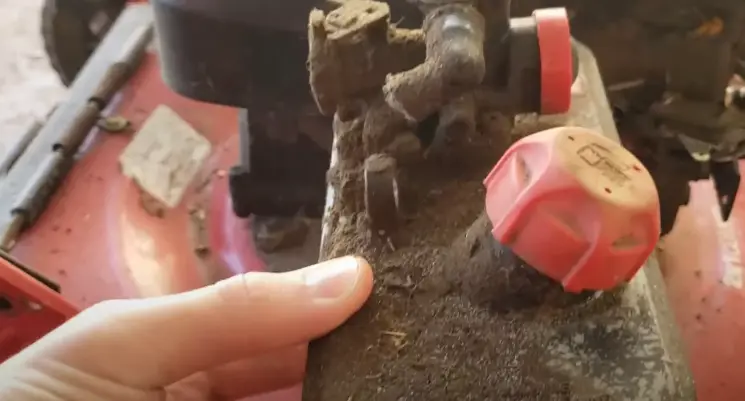
The carburetor tends to glitch if the integrated parts, like passages, ports, valves, and springs, pile up dirt. These can clog because of corrosion over time.
I have also found some owners complaining about how their mower lags every 5 minutes due to gummed carburetors.
To be specific, if the mower sits idle in storage for months, the gas evaporates and leaves a sticky/gummy residue behind. The gum clogs the carburetor, which leads to malfunction.
2. Faulty Caps
If you have got a newer model of lawn mower, I guess it has vent gas caps to comply with the government requirements. In most cases, the cap fails to function or send air into the gas tank. Hence, the mower stops briefly after mowing.
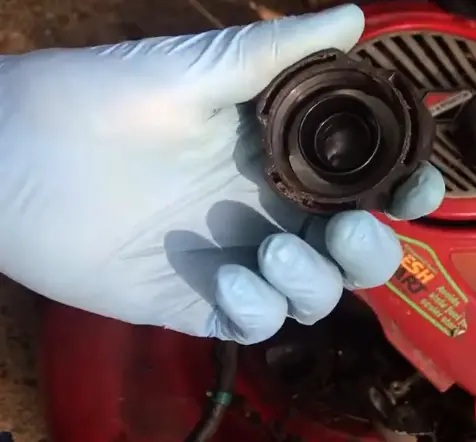
Over time, the cap can form cracks and material wear. Also, if the cap has dirt or gum that is installed improperly, air flow or regulation happens abruptly.
This means if the cap is not in functioning condition, it will fail to release the excessive pressure of the fuel tank. Therefore, the engine does not receive uninterrupted fuel flow, and it triggers the stalling issue.
3. Overheated Mower
It is pretty normal for a lawn mower to overheat, but it should not stall because of the rising temperature. If it does, it is a clear indication that the engine and the mower are raising the temperature more than usual.

Usually, if the fuel or oil is more than 30 days old, it can overheat the mower. Also, dirty or burnt gas and debris can block the engine from releasing its built-in gas. Gradually, the built-in gas that is trapped inside does not allow the machine to cool down. Hence, the temperature rises.
Lawn Mower Runs for 5 Minutes then Dies Troubleshooting guide
A lawn mower dying after 5 minutes of function does not mean you should jump right into replacement! Rather, this issue has some easy DIY hacks that require little to zero bucks. So let’s get some education –
1. Fix the Carburetor
A functioning, clean carburetor is a must to circulate the fuel throughout the mower. So, to fix a clogged, dirty, or gummed carburetor, here is what you need to do:
- Step 1: First, get your hands on the owner’s manual to locate and disassemble the carburetor while the mower engine is cooled down.
- Step 2: With the assistance of a dry cloth, remove the dirt and dust.
- Step 3: To cleanse the gum or wet debris, get a carburetor cleaner can that has a jet sprayer
- Step 4: Spray the cleaner on the carburetor bowl and holes. Do not forget to clean the springs and valves
- Step 5: Reattach the carburetor and avoid over-tightening the springs
The cleansing sprayer should not cost more than $15 bucks approximately. However, if the gums or dirt do not wash away or the mower stalling persists, professional carburetor maintenance is a must.
This may take $50 bucks for cleansing and $40 for a replacement. The pricing can vary based on regions and mower types.
Read also: Lawn Mower Revs Up And Down Then Dies? [3 Easy Fixes]
2. Clean the Gas Cap
A gas cap is a small external compartment, yet it has an impact on how the mower runs. So, always inspect the cap if your mower is stalling after 5 minutes of use.
If you see any visible damage or dirt, follow the process below to keep it functioning –
- Step 1: Unscrew the cap by turning it clock or counter-clockwise.
- Step 2: Add some mild liquid soap or detergent to a bowl of warm water.
- Step 3: Dip a soft bristle brush or clean cloth in soapy water, and rub the brush over the cap, especially the vent hole.
- Step 4: Gently remove the dirt and gum.
- Step 5: Rinse the cap with clean water, and once it dries install the cap properly.
This solution costs nothing if you use the soapy liquid available at home. But to use a cleanser specially made for mower parts, you may have to spend $18 to $25.
In case you find the cap too worn out or damaged, a replacement will charge around $6 to $40, according to the cap type.
3. Let the Mower Cool Down
In case your mower overheats and stalls, you need to take care of the oil and some mower parts to prevent the issue in the future. And I guess the below-mentioned steps will really come in handy:
- Step 1: Turn the engine off and let it cool down for 20 minutes or more.
- Step 2: Open the fuel cap and check the fuel level and its condition. If it seems too dirty or burnt, that releases a burning odor, it is time for fuel replacement.
- Step 3: Remove the spark plug wire from the spark plugs and dispose of the old fuel.
- Step 4: With a dry cloth, clear any dirt or debris piled up inside the fuel tank.
- Step 5: Add new oil that is heat resistant.
- Step 6: At last, clean the fuel cap properly and reinstall it over the fuel tank.
Repairing an overheated mower costs nothing until the issues are beyond DIY repairs. If no solution works for the overheated mower, an air filter replacement is needed, which may cost $6 to $20, including the labor cost.
Lawn Mower Runs then Dies related (FAQ’s)
You might have a lot of queries left regarding the mower stalling issue. For your convenience, I have answered a few of the common questions below –
Should I take the lawn mower to professionals if it stalls every 5 minutes?
If no DIY hacks listed above work, you need to contact a technician. Besides, when you notice visible damage to the carburetor, fuel tank, and wheel systems, consult an expert right away.
Can a gas stabilizer prevent the mower from stalling?
If the mower stalls due to a gummed carburetor, only then the gas stabilizer can prevent the issue. Because the stabilizer does not let gum accumulate in the fuel tank, which triggers stalling.
When should you change the fuel to prevent the mower from stalling?
You should change the oil every 30 days. And it is better to replace the fuel after 25 hours of use. For accurate recommendations, follow the owner’s manual.

